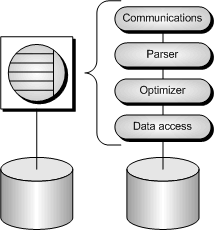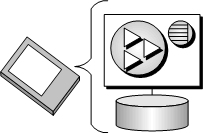The SQL Anywhere database server has an internal structure that allows many requests to be handled efficiently.

There are two versions of the SQL Anywhere database server: the personal server and the network server.
The request-processing engine is identical in both versions, and they support exactly the same SQL language, and exactly the same database features. However, the personal server does not support communications across a network, more than ten concurrent connections, or the use of more than one computer. Applications developed against a personal server work unchanged against a network server. Other differences are as follows:
The name of the personal server executable is as follows:
The name of the network server executable is as follows:
If you have received SQL Anywhere as part of another product, you may not have both versions of the database server. Similarly, not all components are available on all operating systems. For example, there is no personal server for Windows Mobile, only a network server.
For more information about running the personal and network database servers, see Running the database server.
If you want to provide a database application for a small device such as a handheld organizer, you may want to use UltraLite. In UltraLite, the functions performed by the server are typically placed in a runtime library. The runtime library is combined with the application to become part of the same process. Consequently, there is a one-to-one relationship between the database and the application.

For deployments that require multiple applications to connect concurrently to one database on the same device, the library must exist as a separate process. In these cases, the UltraLite database engine is used.
For information about integrating UltraLite and MobiLink, see UltraLite clients.
| Send feedback about this page via email or DocCommentXchange | Copyright © 2008, iAnywhere Solutions, Inc. - SQL Anywhere 11.0.0 |